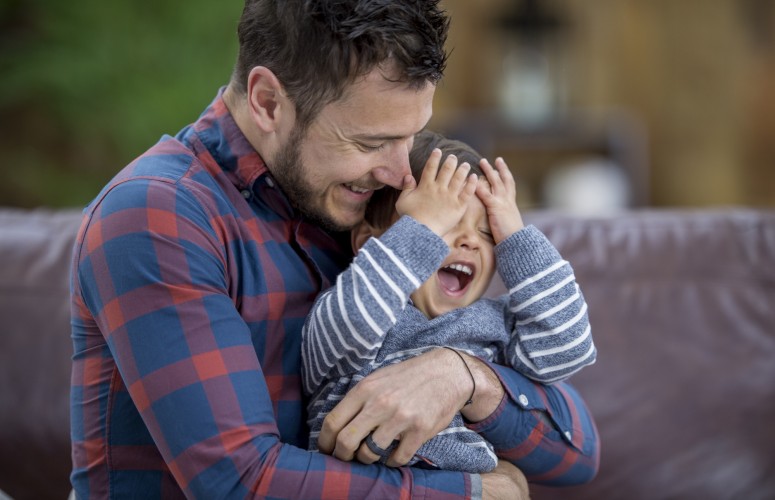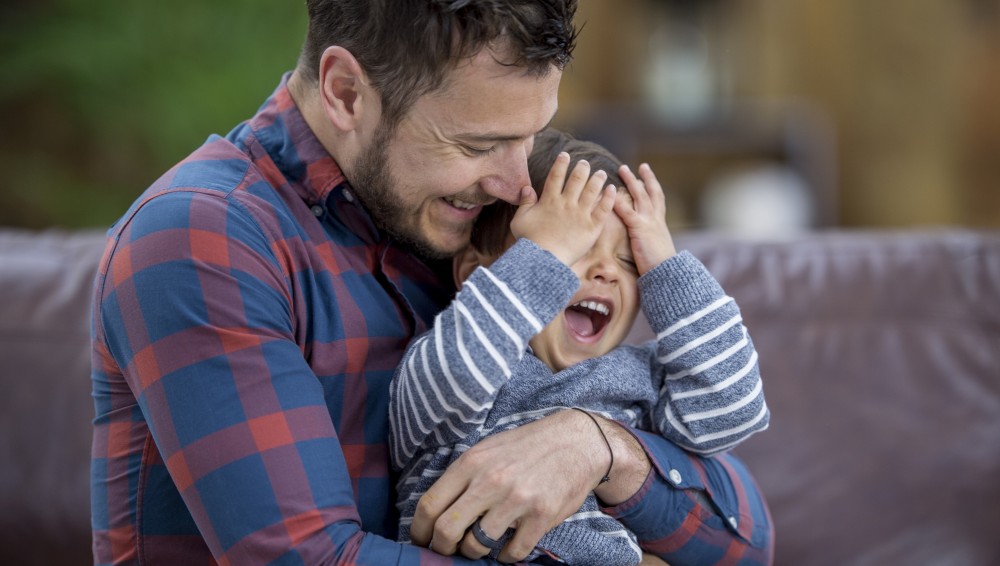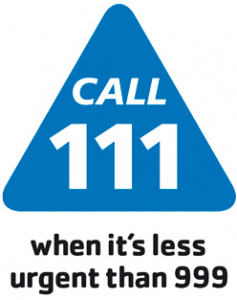To accompany the Top 10 Tips for Talking videos and posters, researchers in language development at the University of Leeds have compiled some of the evidence that supports our advice. We hope that by providing the science behind the tips, this information will help parents and practitioners to understand and remember the ideas and put them into practice more easily.
Introduction - The language development pyramid
Good language skills depend on abilities that children develop long before they start to talk. Research shows that babies whose parents are more responsive go on to develop larger vocabularies and reach their language milestones earlier (Tamis-LeMonda et al., 2014). For example, by taking turns with their babies when they are cooing and babbling, caregivers actively help their child to look, listen, and learn the basic structure of conversation (Ferjan Ramírez et al., 2020). Using eye contact, the baby’s name, and child-directed speech (also known as parentese or babytalk) helps them understand that you want to engage with them. Breast- or bottle-feeding is another pre-linguistic form of turn-taking as babies alternate between actively sucking and then resting, which synchronises with the movements of the person feeding them (Csibra, 2010). As babies grow, play is a great opportunity to continue these crucial back-and-forth games, for example taking turns to add blocks when building a tower or stacking cups.
Tip 1 - Get down to your child's level
Eye contact is a powerful tool in language development. When an adult and their 8-month-old looked at each other while communicating, their brainwaves synchronised and the baby made more vocalisations (Leong et al., 2017). This means that just by sharing eye contact, the infants in this study communicated more.
Eye contact is also key in establishing joint attention, which is when two people both look at the same object and share it socially. Babies start engaging in joint attention between 8 and 15 months of age. They use it to direct attention by looking at something they want then back to an adult’s face to indicate nonverbally, Mummy! Could you pass me that super-exciting toy over there? In this way, they begin to understand that language can be used to change the world. There is a wealth of research showing that early joint attention skills drive vocabulary growth (e.g. Farrant & Zubrick, 2012), though note that word learning can and does proceed without it (Akhtar & Gernsbacher, 2007).
Tip 2 - Comment on what you're both looking at
Repetition of new words provides the experience that young children need to learn and remember new words (Horst & Samuelson, 2008; Mather & Plunkett, 2009). Each time a child hears the new word they build up knowledge about it, for example its precise meaning, its pronunciation (and how that might vary), and which words it can combine with. Eventually, the child comes to understand the word across contexts, and ultimately produces the word themselves.
Sharing storybooks is a great way of building up exposure to new words, and we know that children love to hear the same story or joke over and over again. Research shows that children learned more new words during shared book reading if they were read the same stories repeatedly than if they were read different stories that had the same number of words (Horst et al., 2011).
Tip 3 - Model words correctly
Babies and children thrive on input, and they will look to you as one of their main sources of language. Don’t worry about using the ‘right’ accent or a particular language – children just want to hear their caregiver’s voice.
Repeating a child’s phrases with subtle correction or with a few extra words are common techniques used by caregivers, and are very helpful for the child. These are known as recasts and expansions. For example, Him need juice might be recast by an adult as a question; “Does he need some juice?” Recasts and expansions are effective ways to support many aspects of the language development of typically- and atypically-developing children (Cleave et al., 2015).
Research also shows that children benefit more from hearing full, grammatically correct sentences, rather than simpler phrases or single words (Hoff & Naigles, 2002). Using full sentences helps children identify the key words what these words refer to (Monaghan & Mattock, 2012).
Tip 4 – Dummies
Many parents and SLT professionals assume that dummies impede speech development, reasoning that excessive and prolonged dummy use limits children’s early vocalisations and reduces opportunities to talk. Likewise, SLTs have traditionally observed that in rare cases where school-aged children continue to use dummies, there have been significant articulatory disorders and delays which are difficult to resolve. However, many of these claims are not based on large-scale data, meaning that the existing peer-reviewed evidence base for a causal link between dummy use and speech development is weak (see Nelson, 2012 for a review).
Against dummy use, a greater incidence of inadequate lip tone and tongue position during speech has been attributed to dummy sucking (Verrestro et al., 2006). A retrospective study revealed that 30% of the children in a sample who used dummies developed speech problems, compared with only 12% of those who did not (McNally, 1997). Another study found that dummy use had a negative impact on speech in 3-5 year old children, though only if the dummy had been used for more than three years (Barbosa et al., 2009).
In contrast, several studies find no significant impact of prolonged dummy use on speech articulation (e.g. Shotts et al., 2008). Similarly, no association between a history of oral sucking and the presence and severity of phonological impairment was found (Baker et al., 2018). Some researchers believe the connection between dummy use and speech problems may be secondary to the increased incidence of otitis media in dummy users, though it’s worth noting that the link between otitis media and long term speech and language outcomes is also unclear, e.g. Roberts et al. (2004).
To date, scientific studies show no strong or consistent association between dummy use and speech development. Prolonged dummy use may negatively impact speech development, but further research is needed before evidence-based recommendations can be made. However, while the individual vs population-level findings are inconsistent, many practitioners would agree that a child’s opportunities for articulating words correctly and engaging in conversation are reduced if she or he frequently uses a dummy during the day. Therefore, reducing dummy use may be recommended by a Speech and Language Therapist.
Tip 5 - Give choices
Offering a child two items, e.g. “Do you want a banana or an orange?” while they can see both is a great opportunity for learning. First, children are able to link the words they hear to the object they can see – a free and easy vocabulary lesson! But the magic really happens when they meet new words and objects. If a child hears a familiar word, e.g. banana and a new one, e.g. sushi while they can see an object they know (the banana) and one they’re not familiar with (the sushi), they work out that the new word must relate to the new object. Hey presto, they’ve learned a new word. This is one way that children expand their vocabulary; psychologists call it mutual exclusivity (Markman & Wachtel, 1988).
Giving choices is also a great opportunity for kids to practice their understanding of questions, and – providing you give them time to respond – allows them the space to take their conversational turn.
Tip 6 - Reduce screen time
Screen time can be a great source of anxiety for parents, and it can be hard to navigate the evidence about how screens affect children’s development. It’s fairly clear that extreme amounts of screen use can be damaging to children’s development. It’s worth thinking about what children might not be doing while they’re spending time on screens. We know that children learn to communicate through interactions with other people during the early years. More screen time means less time spent interacting with those they love.
Recently, the American Academy of Pediatrics (AAP) guidelines on screen use have been updated to acknowledge that video chat can facilitate social connection with distant relatives. The AAP recommend that screen use other than video chatting should be avoided for children younger than 18 months, should be used only with parental facilitation for children aged 18-24 months, and should be limited to a maximum of one hour per day for the over-2s (Council on Communications and Media 2016). Reports indicate that families in the UK regularly exceed these levels (Cheung et al., 2017; Taylor et al., 2018).
The concept of ‘screen time’ itself might be oversimplistic. Except in extreme cases, focusing on the amount of screen use is unhelpful. Instead, research is starting to look at the context of screen use and the content that children encounter when using digital technologies – factors that are likely to have a greater impact than quantity alone. For example, educational programmes and co-viewing are positively associated with children’s language skills (Linebarger et al., 2014; Madigan et al., 2019; Yang et al., 2017).
While some studies show that greater screen time is associated with poorer communication, and motor / problem solving skills, they can’t prove that screens are directly responsible for this (Madigan et al., 2020). It’s more likely that screen use is linked to other influences such as socioeconomic background, and frequency of reading, sleep, and physical activity. Researchers’ next steps are to disentangle these factors to really understand the best ways to support families, including how to have healthy relationships with screens.
Tip 7 - Share books and sing nursery rhymes
Shared reading helps children develop a wide range of early language skills. These include vocabulary, understanding sounds and grammar, storytelling and conversation skills, inferencing, and future reading ability (see Noble et al., 2019 for a review). It helps with joint attention (see Tip 1), imagination, curiosity, bonding, and social and emotional development. It also helps children to connect with other languages they are learning. Studies show that children who read regularly with an adult in the preschool years learn language faster, enter school with a larger vocabulary, and become more successful readers in school (Bus et al., 1995; Mol et al., 2008).
It’s never too early to introduce children to reading. Visit the library and let them choose the books they’re interested in. Children love to hear the same stories and rhymes over and over again (tedious as it can sometimes be for adults!). Predictability helps them feel secure and the repetition helps them learn new words effectively.
Tip 8 - Follow your child's lead in play
The way that caregivers respond to children has a major effect on their language development. Noticing what a baby or child is attending to, and then talking to them about it boosts language development – and this effect can last throughout childhood. Talking about what the child is focusing on is called contingent talk by psychologists. Studies show that this helps word learning in young children (Donnelan et al., 2020; McGillion et al., 2017). If you tune into what your child is doing, for example feeding a doll, and then say “oh, you’re feeding the dolly”, there’s a good chance they will learn something not only about what the words mean, but also how they are used in a sentence. Before they are 18 months old or so, children might struggle to redirect their attention to things that they’re not already looking at or holding, so it’s more helpful if you talk to them about the here-and-now at this age. Your baby will help you with this by pointing and babbling.
Tip 9 - Playing is fun
Some quiet time with a child away from the TV and other distractions is one of the best things caregivers can do for their development. Look at a book together and talk about the pictures. Play with a favourite toy and comment on what’s happening. Many of the basic building blocks for language come for free when you’re engaging in this way. For example, exposure to new words and their relationship with the world, the structure of sentences, joint attention, and turn-taking. Even five minutes of talk and play will increase the number of words a child hears, which amounts to a huge amount of extra language over the months and years. The more words a child hears, the greater their own language skills will become (Hart & Risley, 1995; Rowe, 2012). Just chatting is enough - research shows that informal language play is more effective for children’s language skills than corrective feedback (Dale et al., 2015).
Tip 10 – Using Questions and Comments
Child-directed speech typically contains a lot of questions, so it’s important to get the most out of these opportunities, for example by asking open questions and by giving children enough time to answer. One study found that 31% of mothers’ utterances to their children were questions (CameronFaulkner et al., 2003). That means that a child living in a language-rich environment will probably hear about 2000 questions every day – including many that the adult already knows the answer to! (Yu et al., 2019).
A large body of research shows us that two of the most important aspects of caregiver-talk are turntaking and language complexity. Questions are a powerful way of achieving both of these things. Parents who were trained to ask more open-ended questions had longer conversations with their four year-old children that included more diverse vocabulary (Leech & Rowe, 2020). Questions that begin with Who, What, When Where, and Why are especially useful for eliciting a greater amount of, and more complex language from children (Cristofaro & Tamis-LeMonda, 2011; Vernon-Feagans et al, 2020), both in the moment, and in their growth of language going forward (Tompkins et al., 2017). Particularly compelling is the finding that the overall quantity of talk (in this case by fathers to their two year-old children) did not affect children’s vocabulary or verbal reasoning skills, but fathers’ specific use of wh- questions relates to both types of language skills in their children (Rowe et al., 2017). Positive links have also been found with children’s own grammatical sophistication, for example if a 1-3 year-old hears lots of questions like “Are you going to eat that?” or “Is it raining outside?”, they are more likely to use ‘are’ and ‘is’ correctly themselves (Hoff-Ginsberg, 1986; Newport, 1977). Caregiver questions have also been linked to children’s achievement at nursery, and to their school readiness (Reynolds et al, 2018).
So although posing wh-questions to children can challenge them, it elicits responses that help them develop the critical skills of word building and verbal reasoning. It is never too early to start using questions: children whose mothers use a higher proportion of wh- questions at 11 months went on to have higher language scores when they were two years old (Lindenger et al., 2010).
Caregivers should also remember to give their children time to respond to questions. One study found that when elementary school teachers extended the time that they waited from one to five seconds, children increased the number, length, and sophistication of their responses (Rowe, 1974). These moments of silence can give the child valuable time to formulate their responses and can nurture the pure gold of longer conversations. On top of that, the five finger rule can help increase the language that children hear.
Dr Catherine Davies, Associate Professor, Leeds Child Development Unit, University of Leeds.
Sara Winfield, Specialist Children’s Speech and Language Therapist, Leeds Community Healthcare NHS Trust.
If you would like a copy of the supporting document of evidence, including references, please email Andrea Arnold at andrea.arnold@nhs.net




